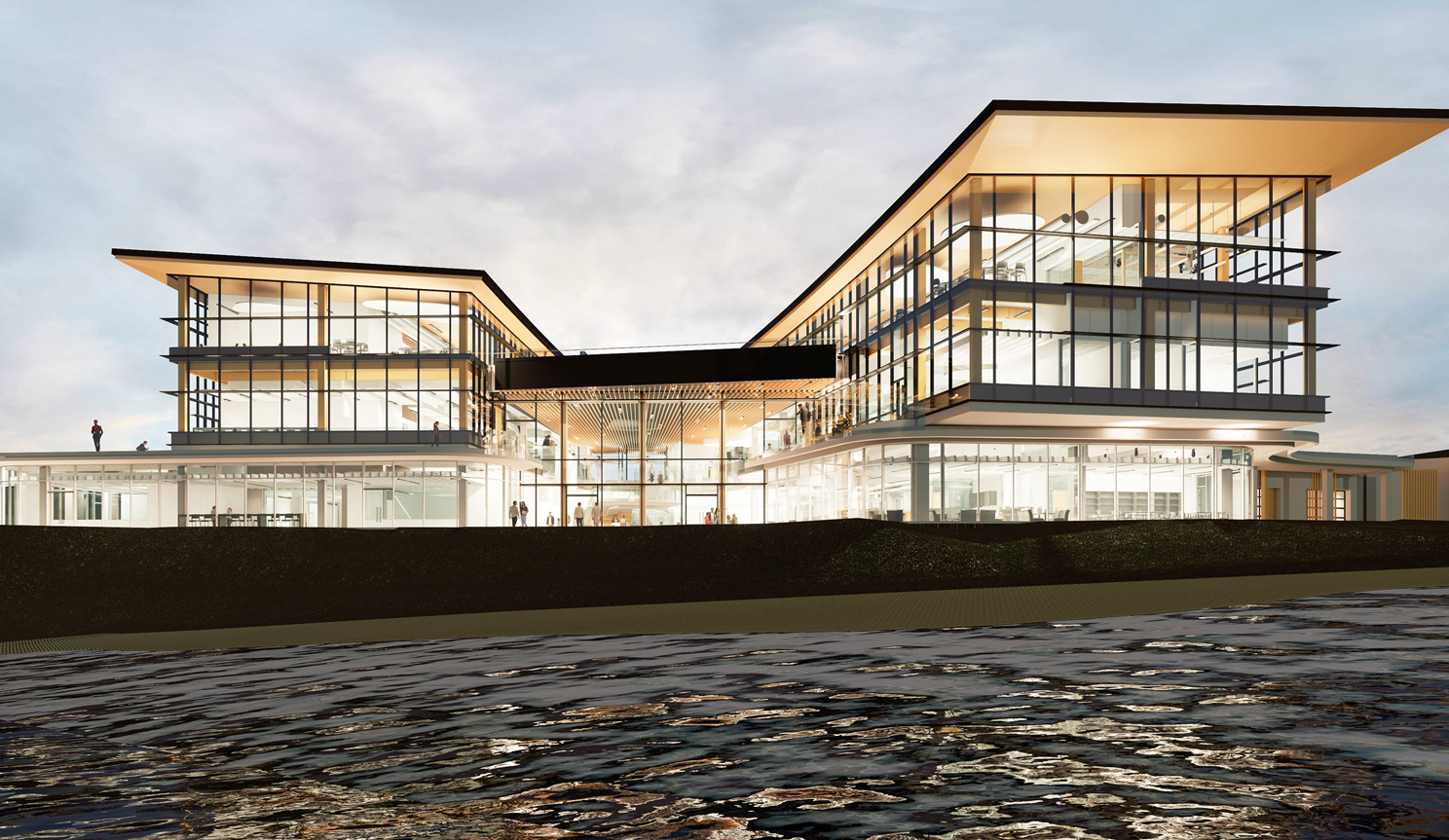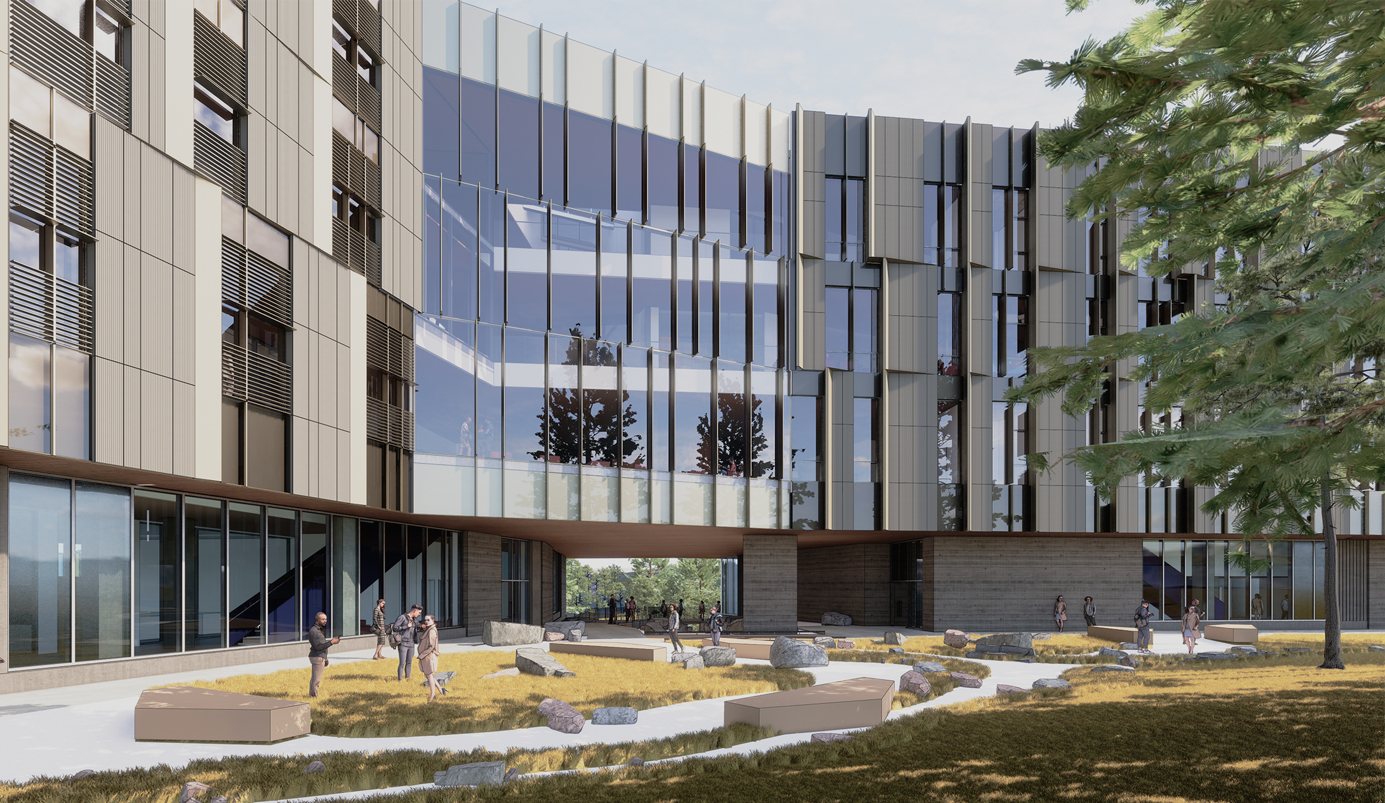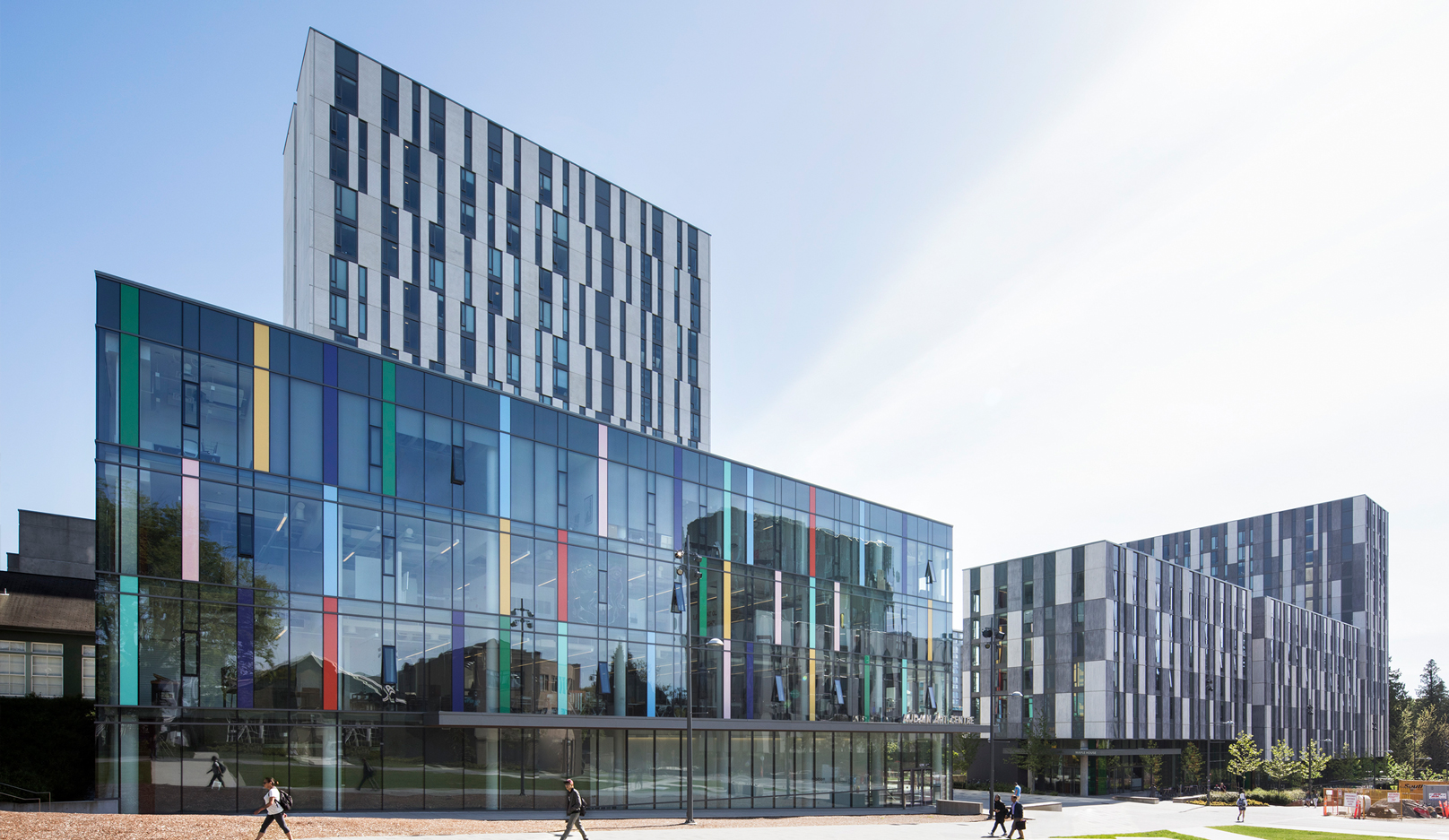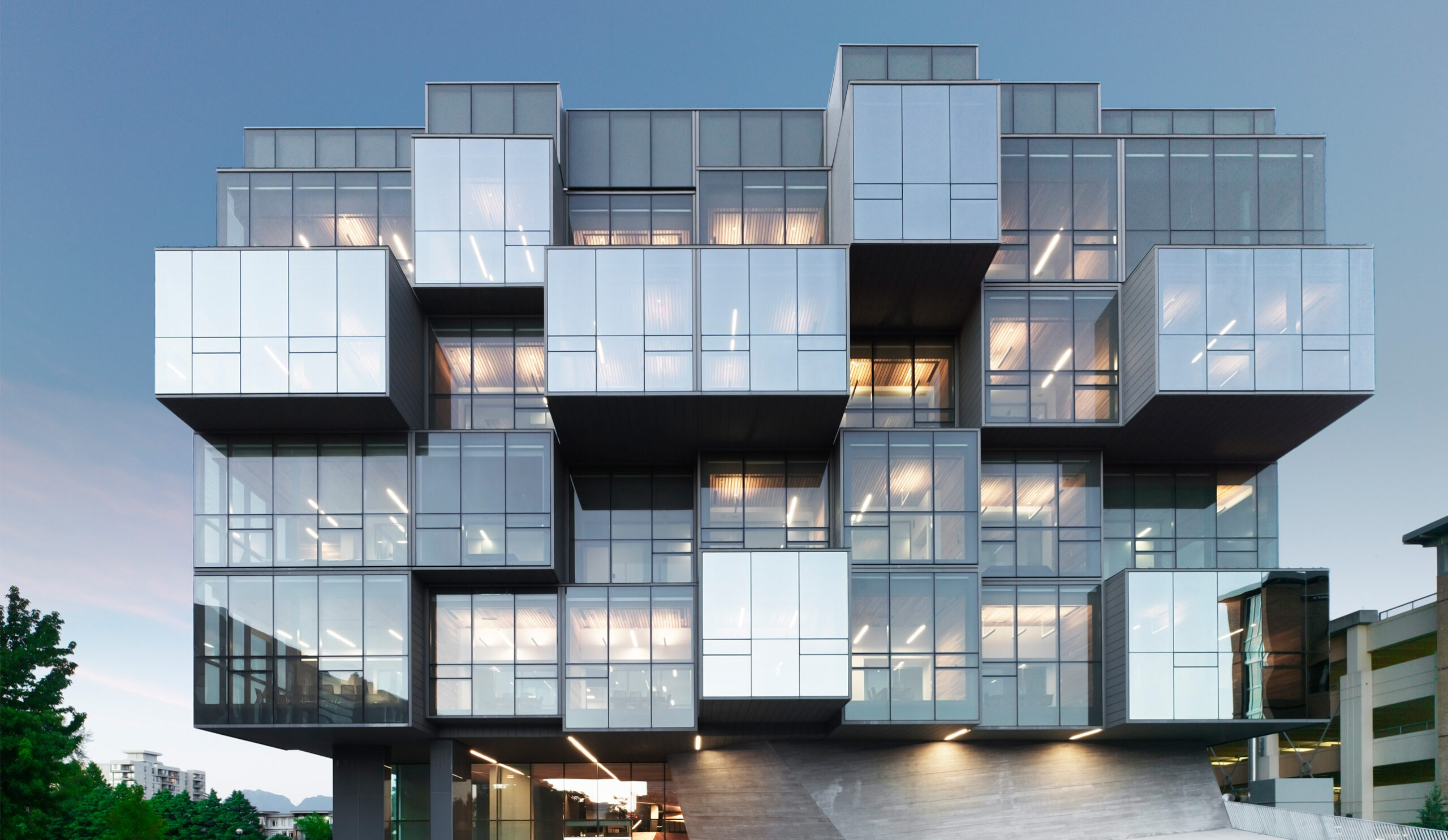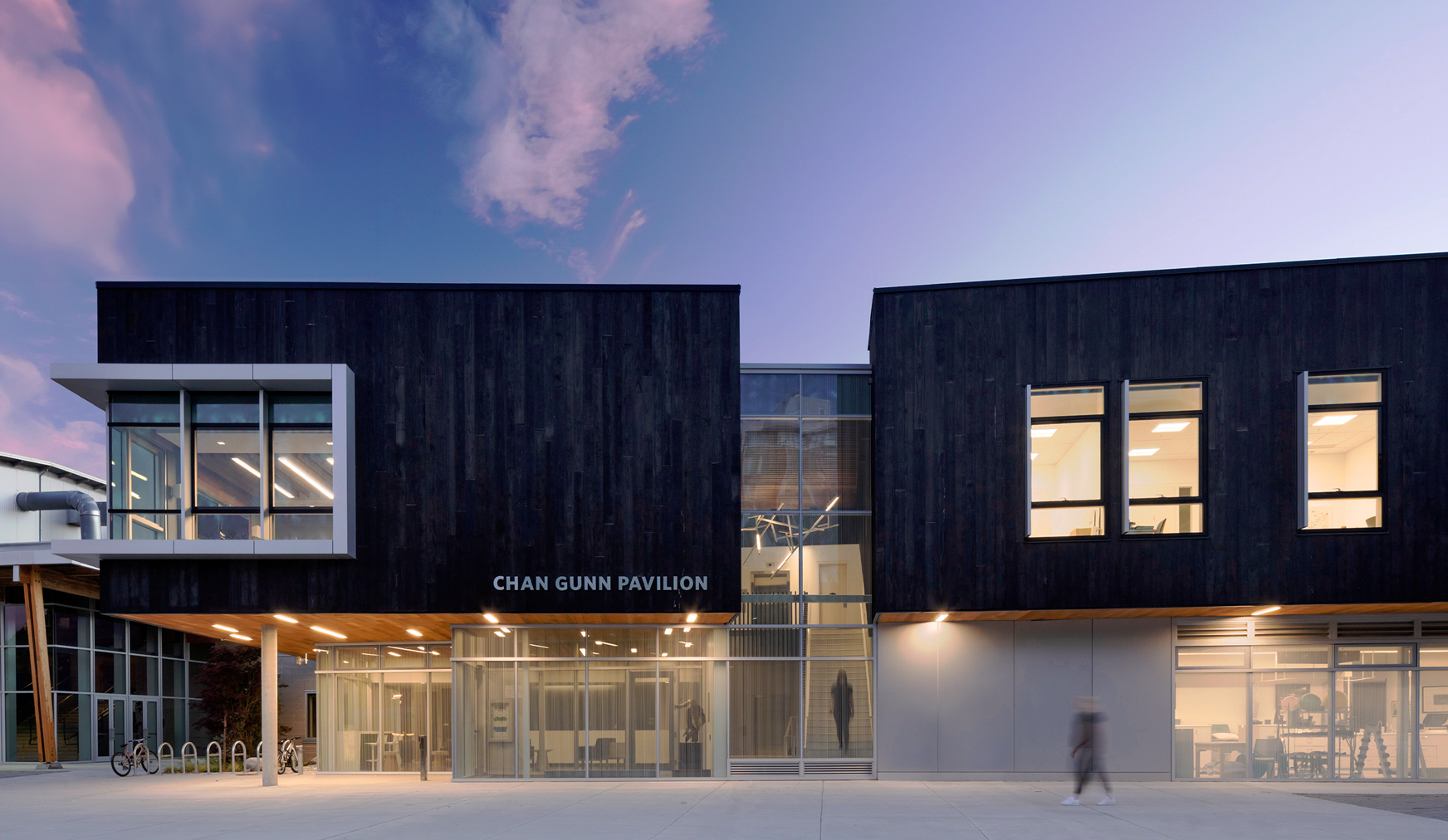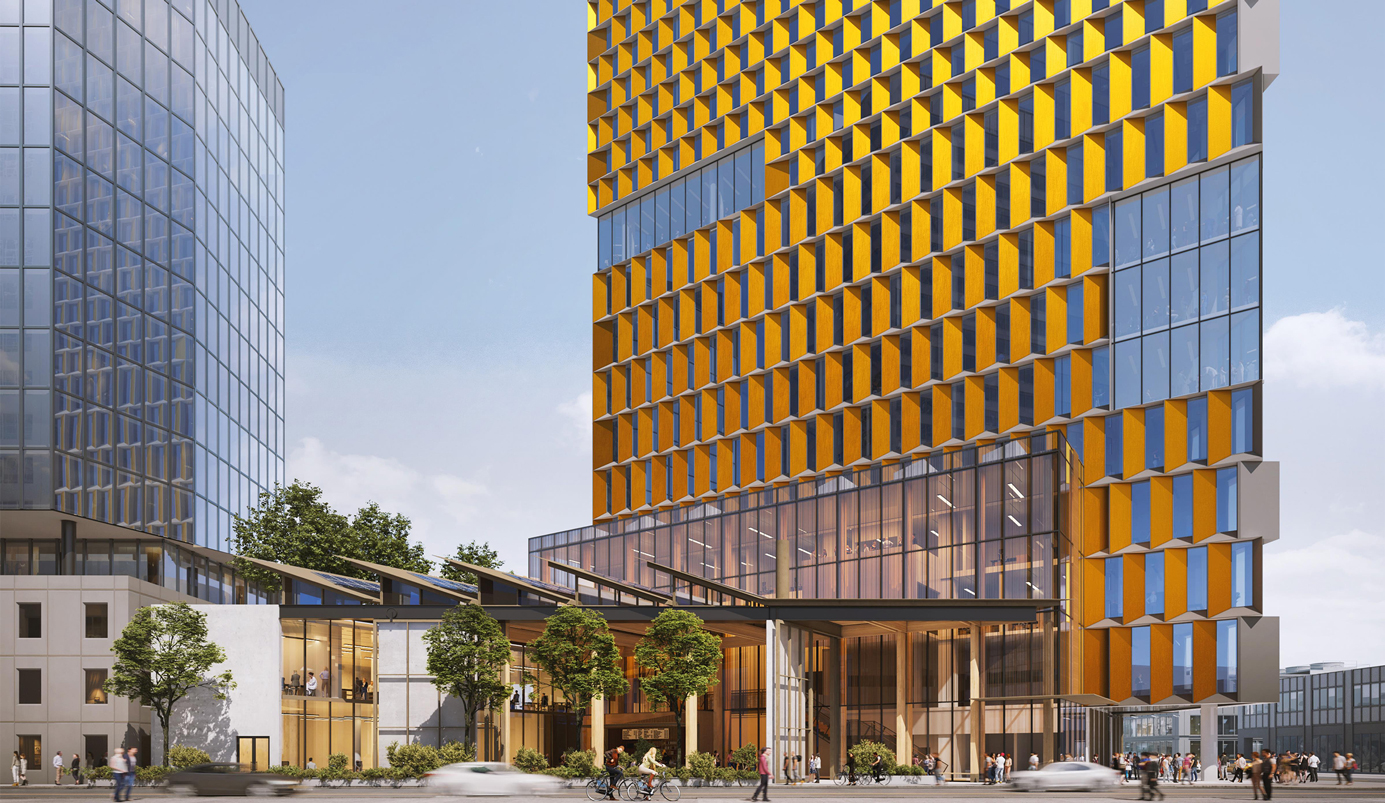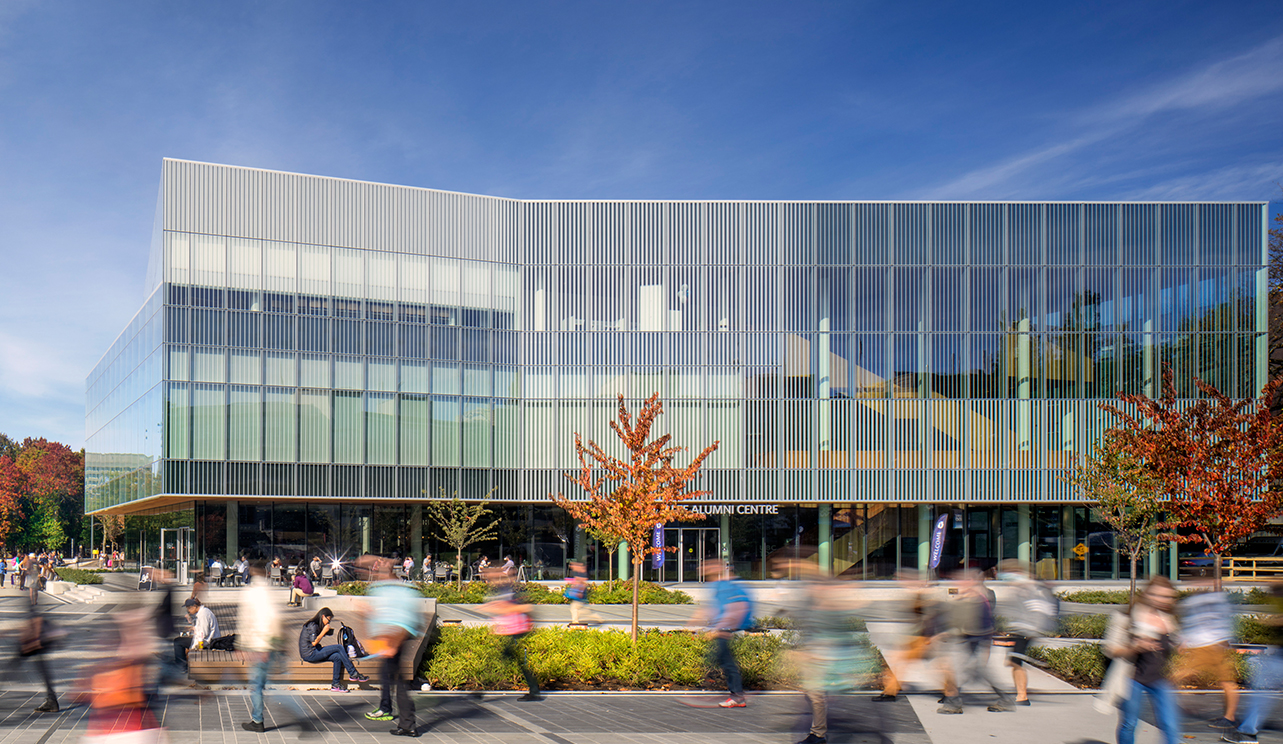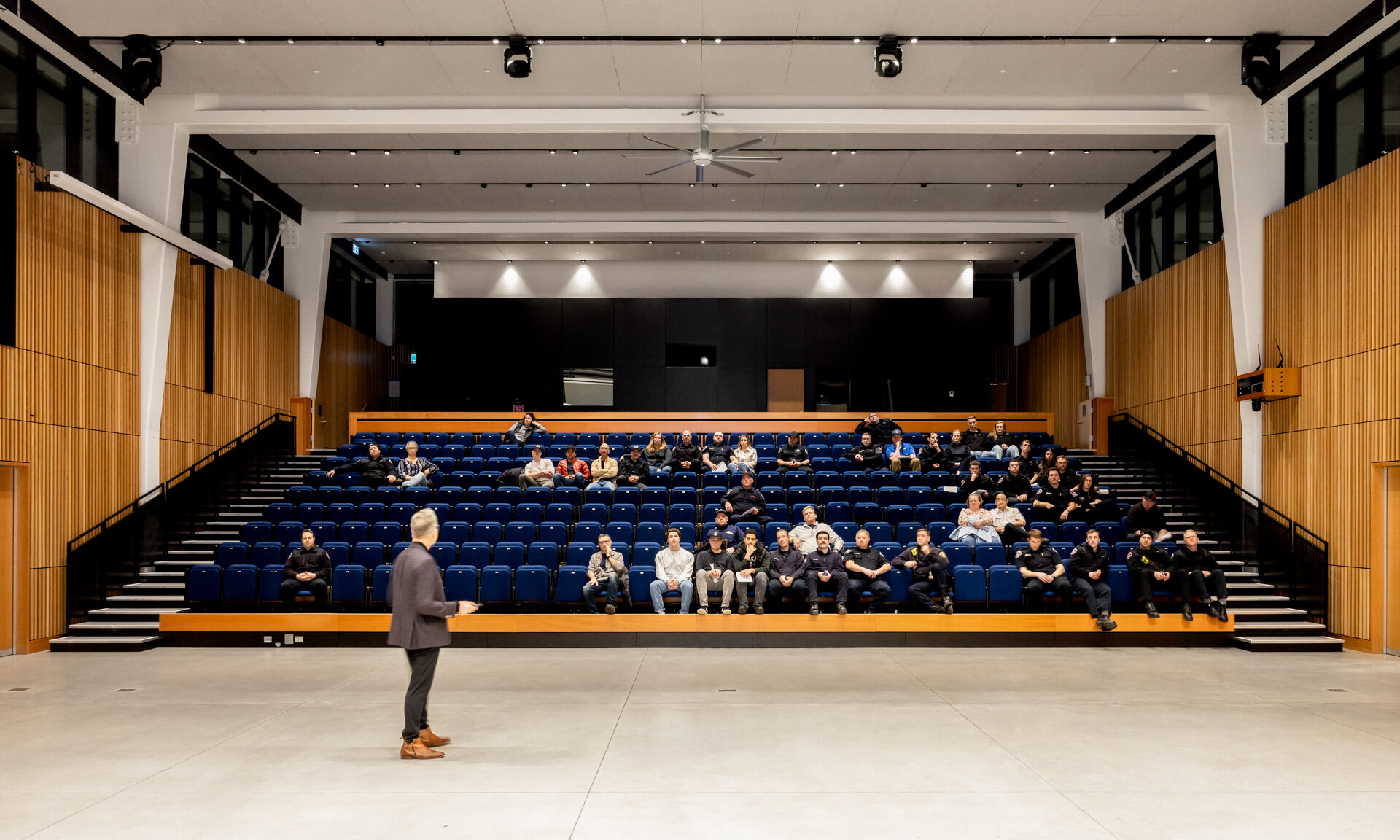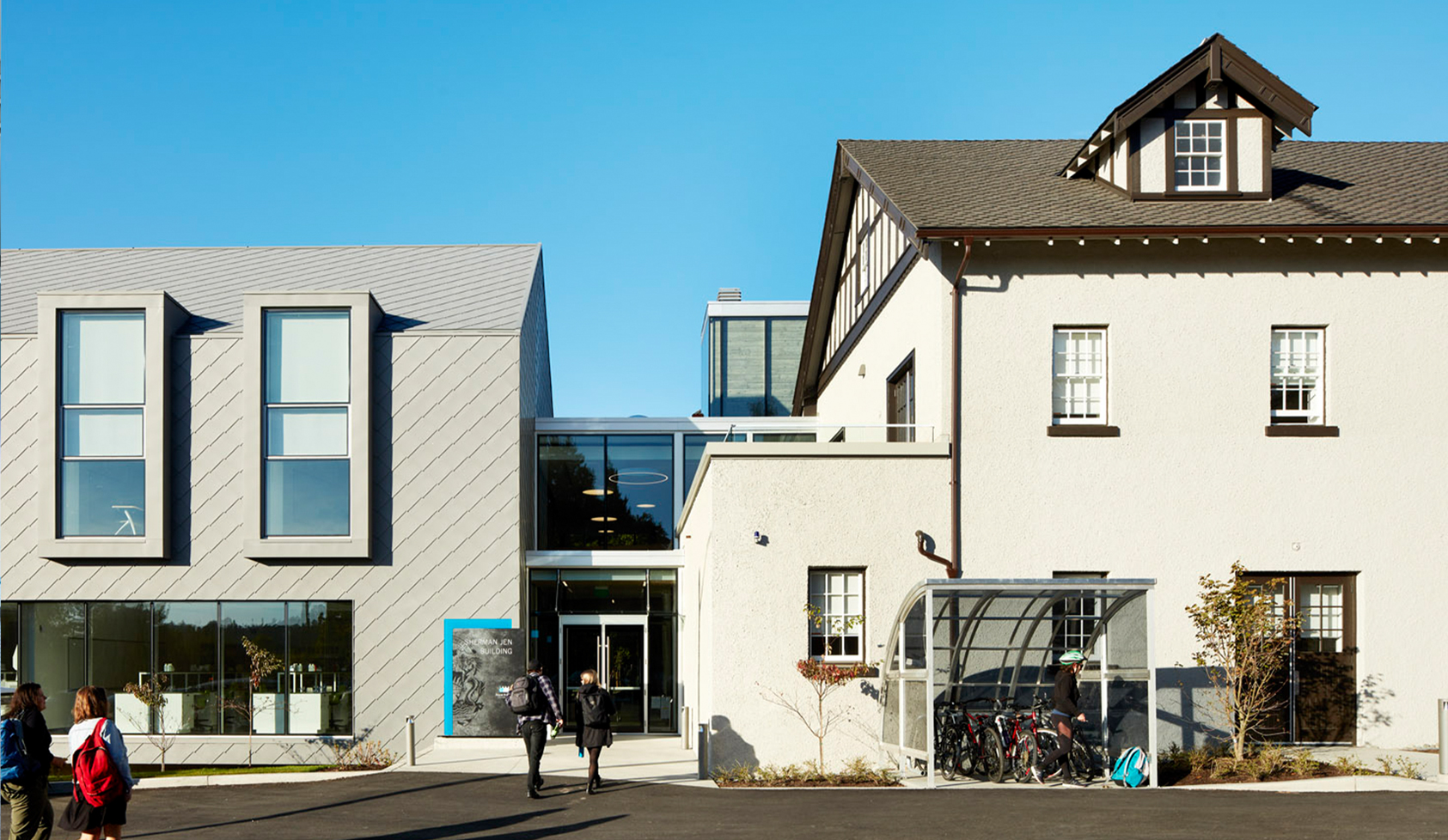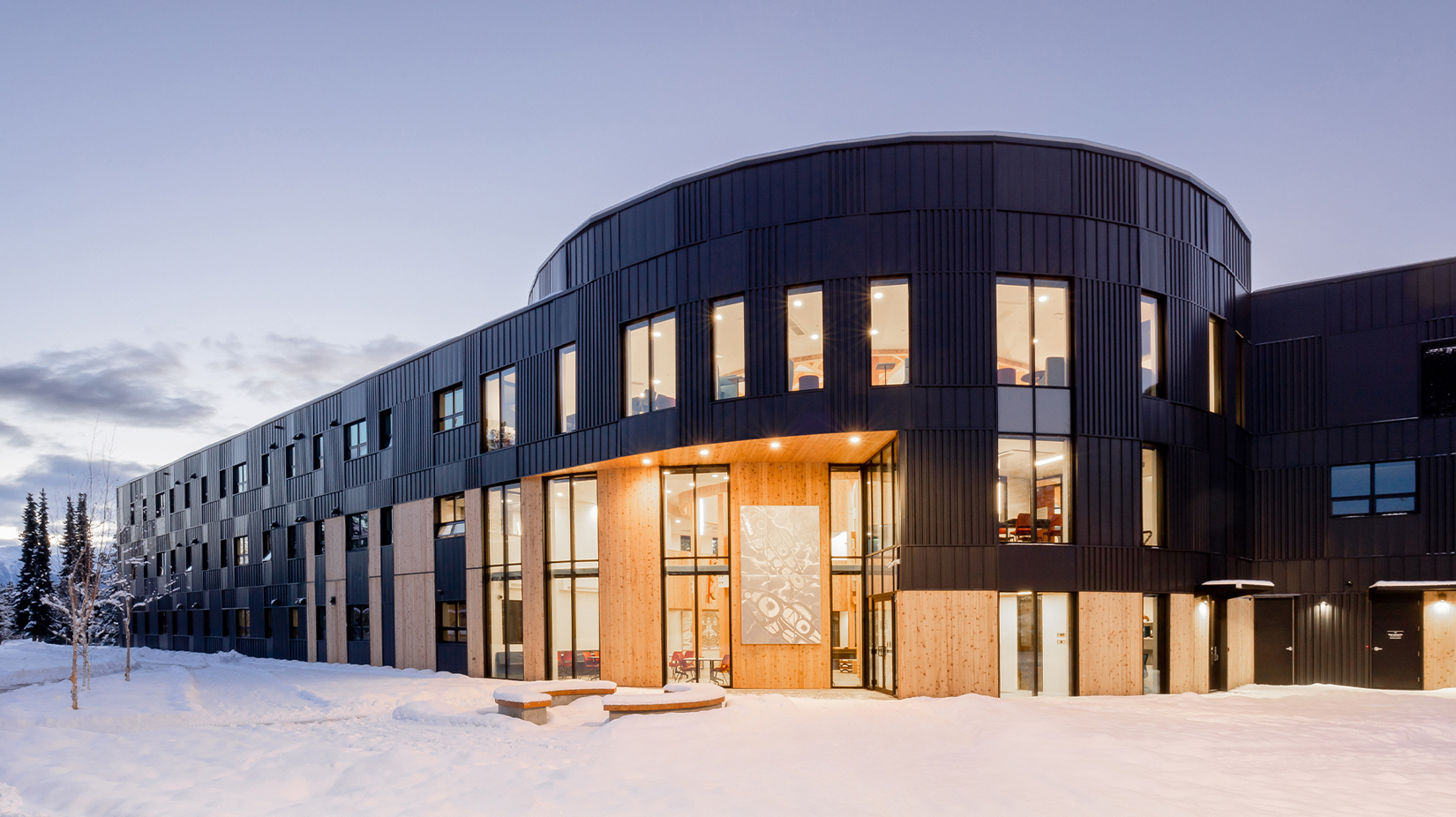
Wii Gyemsiga Siwilaawksat Student Housing
Location
Traditional territory of the Tsimshian Kitsumkalum People Terrace, B.C.
Wii Gyemsiga Siwilaawksat is a new student housing building for Coast Mountain College that empowers Indigenous students to flourish in post-secondary education.
Named by the Kitsumkalum community—and translating to “where learners are content and comfortable”—Wii Gyemsiga Siwilaawksat sits on the traditional territory of the Kitsumkalum people in Terrace, BC, serving seven different First Nations: the Haida, Tsimshian, Haisla, Nisga’a, Gitxsan, Wet’suwet’en, and Tahlta peoples.
Guided by an Indigenous-led process of co-creation, our design is informed by Indigenous peoples’ stories—and their right to share their histories with future generations.
Disciplines
Areas of impact
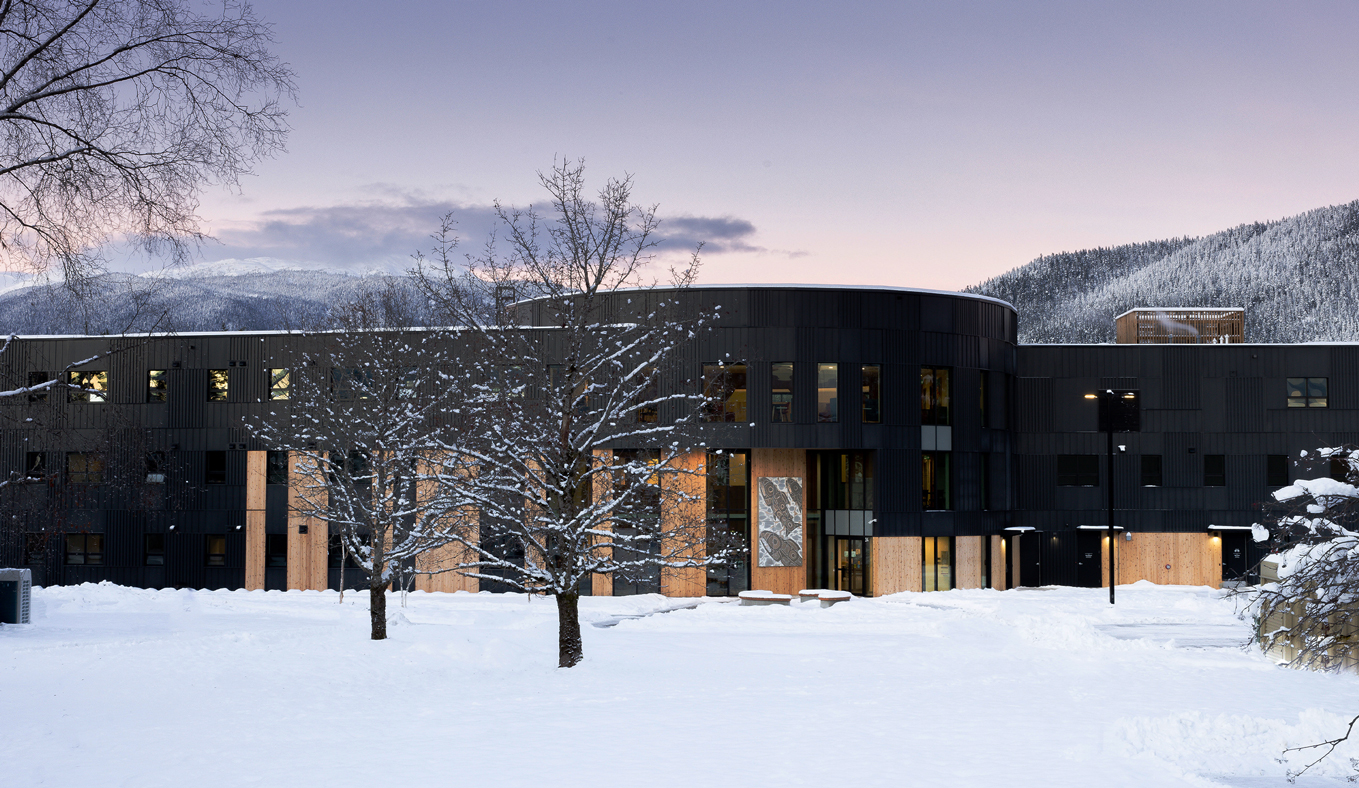
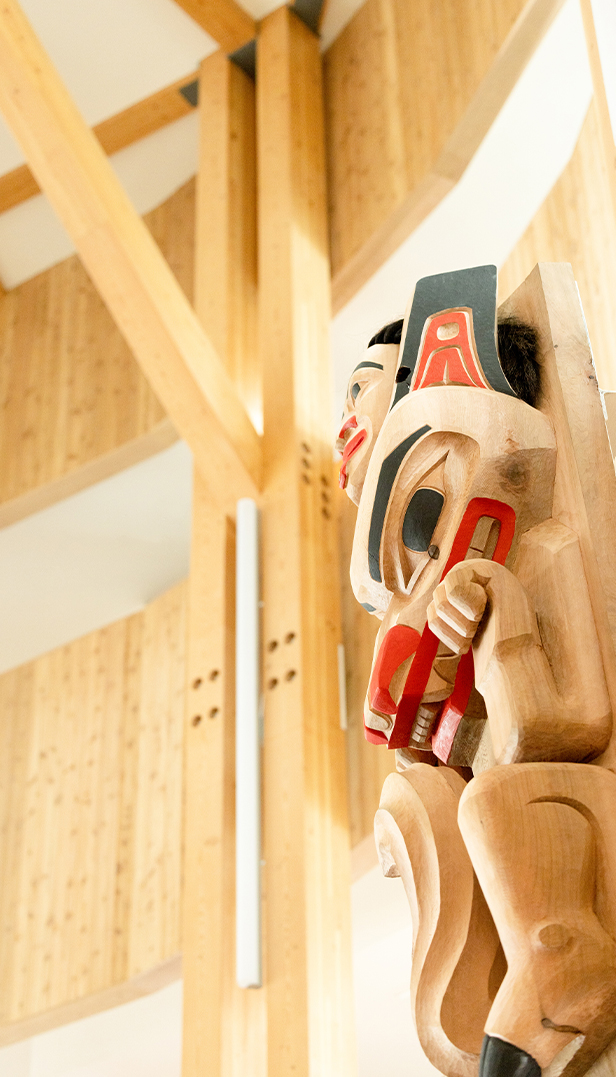

Inspired by sacred cedar
The old growth cedar tree is a symbol of the Northwest Coast. Used for shelter, clothing, transportation, ceremony, and spiritual beliefs, it’s been integral to local First Nations’ culture for thousands of years.
It felt appropriate for this sacred material to inform the building’s expression. For the exterior cladding, Tsimshian weaving patterns seamlessly unite the building’s two student housing wings, while mimicking the expression of cedar bark.
Inside, a cedar clad central lobby space—akin to a hollow cedar tree, or heartwood—hosts gatherings and celebrations. Each of its three levels are connected by house posts, while a glulam pin-wheel structure—inspired by traditional Northwest Coast Indigenous architecture—honours each Nation the college serves, symbolizing connection, strength, and unity.


Integrating Indigenous art
Students attend Coast Mountain College from a vast cross section of communities. To help them feel represented, over 70 different art installations were designed by Indigenous artists and appear throughout the building.
Master carvers and Coast Mountain College instructors Stan Bevan and Ken McNeil led the procurement process, collaborating with students and alumni of the Freda Diesing School of Northwest Coast Art.
The central celebration space hosts eight, six-foot tall cedar house posts, each telling unique stories of the First Nations the school serves, while each student housing floor has a theme that represents their distinct cultures—expressed through artwork and carved cedar panels. A twenty-foot totem pole was also carved and installed in the landscape to mark the opening of the building.

A safe space for spiritual practice
To further support the students, Coast Mountain College’s First Nation Council identified key cultural spaces to integrate throughout the building.
An Elders suite and two suites for visiting families provide accommodation and facilitate the traditional practice of Elders and family supporting students through their education, while a cultural room offers a safe space for knowledge sharing and cultural practice, with a carved door and appropriate ventilation for smudging.
Elsewhere, a maker space allows students to integrate art and craft into their day to day lives.
Strengthening language through signage
To revitalize and strengthen Sm’algyax—the local First Nations language where the building resides— two Tsimshian territory holders and Kitsumkalum Elders translated signage into Sm’algyax.
As some spaces use colonial terms with no direct translation in Sm’algyax, the territory holders had the right to determine translations that were culturally appropriate, recognizing the rich nuances between languages that can make direct translation difficult.
Tsm’syen/Nisga’a fine arts student Shawna Kiesman collaborated with hcma’s wayfinding team to transform signage iconography into custom formline design.

One student's story
Life can change rapidly. Spencer is from Key First Nation on Treaty Four territory. After experiencing homelessness for five years, his journey led him to embark on a new path and enroll at Coast Mountain College in Terrace, BC. There, the cultural space within the Wii Gyemsiga Siwilaawksat student residence has become very important to his spiritual practice: a place to smudge, to study, and to strum.
This short film is part of The Space Between, a growing collection of stories that offer a glimpse into the lives of the people who use the buildings we design: the people we design for.
To learn more and discover other stories, visit The Space Between.
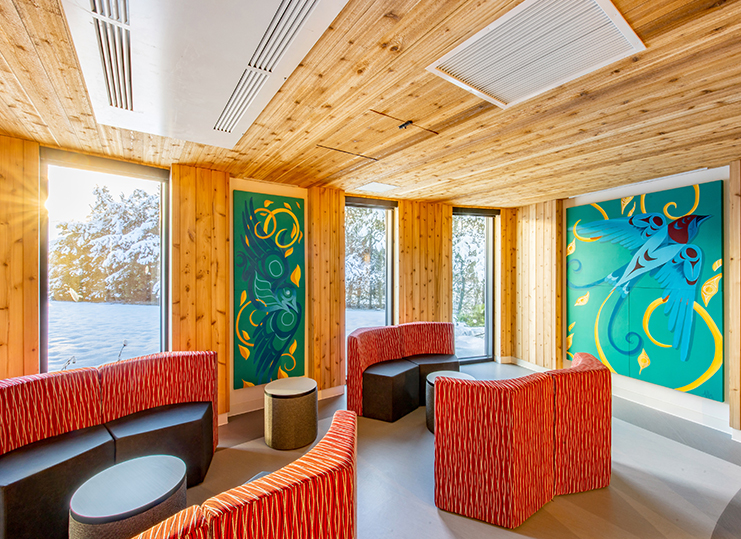
Seamless construction for a high performance building
Wii Gyemsiga Siwilaawksat’s housing component integrates 36 modules that were built off-site, allowing for faster delivery times. The central structure was site-built, allowing for a unique cultural expression and creating a seamless transition between the modular construction.
The building has met British Columbia Energy Step Code 4, achieving the high energy-efficiency standard through increased insulation, careful attention to detailing, minimizing heat loss, increased level of air-tightness, and triple pane glazing.

